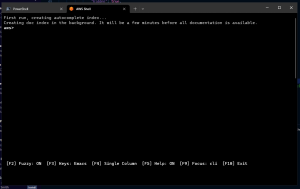 I had a customer call up and explain their Power BI reports had stopped working, they’re not managed so after working a few things out we got to work and jumped into their Datawarehouse environment in AWS. After a quick look we could see that their RDS SQL Server instance had TLS turned on and that no one had managed or bothered to rotate the certificate which had now expired. This is a very quick and painless process (since it’s a managed instance) and simply requires a reboot. Once loaded, refreshing a report would result in an error of Something went wrong, and looking in the details we could see The certificate chain was issued by an authority that is not trusted.
I had a customer call up and explain their Power BI reports had stopped working, they’re not managed so after working a few things out we got to work and jumped into their Datawarehouse environment in AWS. After a quick look we could see that their RDS SQL Server instance had TLS turned on and that no one had managed or bothered to rotate the certificate which had now expired. This is a very quick and painless process (since it’s a managed instance) and simply requires a reboot. Once loaded, refreshing a report would result in an error of Something went wrong, and looking in the details we could see The certificate chain was issued by an authority that is not trusted.
 You also need to ensure to load the AWS RDS Root certificates onto their Power BI Gateway and Reporting server, downloading them from AWS here and then loading them into the trusted certificate authority in the Windows Certificate store. Once done, we could see reports refreshing and pulling data as expected.
You also need to ensure to load the AWS RDS Root certificates onto their Power BI Gateway and Reporting server, downloading them from AWS here and then loading them into the trusted certificate authority in the Windows Certificate store. Once done, we could see reports refreshing and pulling data as expected.
Moral of the story? Just because it’s managed doesn’t mean it’s set and forget…


